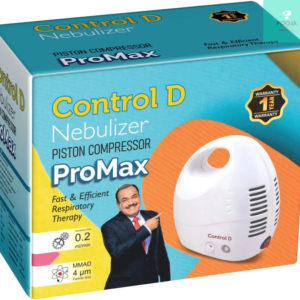DISCRIPTION
Types of “MAX BP” Machines
Max Pluss Aneroid Blood Pressure Monitor: This is a manual blood pressure monitor, also known as a sphygmomanometer. Key features include:
Components: A soft cotton/nylon cuff, an emulsion bladder and bulb, and a leather carrying bag.
Design: It has a full-view dial for easy reading, with a pressure-die-cast aluminum body and anti-rust coated parts for durability.
-
- Max Automatic Inflate Blood Pressure and Pulse Monitor (Model MX6): This is a digital blood pressure monitor with automatic inflation. Its specifications include:
- Measurement Method: Oscillometric.
- Measurement Range: Pressure from 0 to 300 mmHg and pulse from 40 to 199 beats/minute.Accuracy: Pressure accuracy of ±3 mmHg and pulse accuracy of ±5%.
- Memory: Stores up to 120 readings for three users.
- Power: Operates on AAA batteries or a 6V AC adapter (not included).
- Features: Automatic inflation and deflation, liquid crystal display, and an automatic shut-off feature after one minute of inactivity.
MAX-LIFE BP Machine 1210 WITH VOICE: This is another digital blood pressure monitor that is fully automatic and includes a voice feature to read out the measurements. It comes with a small adult cuff.
- Max Automatic Inflate Blood Pressure and Pulse Monitor (Model MX6): This is a digital blood pressure monitor with automatic inflation. Its specifications include:
- Life LINE Max Deluxe Portable Mercurial Blood Pressure Monitor: This is a traditional mercurial sphygmomanometer, which uses a column of mercury to measure blood pressure. Features include:
- Scale: A 0 to 300 mm Hg mercury scale with a yellow base for clear visibility.
- Components: A borosilicate glass tube, a black rubber bulb and armlet, and a high-quality cuff with a Velcro fastening.
Durability: Comes in an easy-carry, powder-coated metal box to prevent corrosion.
- Certification: ISI marked and calibrated.
- If you have a specific model number, please provide it for a more precise description.
How you use a “MAX BP machine” depends entirely on the type of monitor you have—manual or automatic. Here’s a breakdown of the general steps for each type.
Important Preparations for Any Blood Pressure Measurement Before using any blood pressure monitor, follow these steps to ensure an accurate reading:
- Sit quietly and relax for at least 5 minutes.
- Sit upright with your back supported and your feet flat on the floor. Do not cross your legs.
- Rest your arm on a flat surface, such as a table, so that the cuff is at heart level.
- Avoid consuming caffeine or alcohol, smoking, or exercising for at least 30 minutes before taking a measurement.
Automatic “MAX BP” Machine (e.g., Model MX6 or 1210 WITH VOICE)
Digital, automatic blood pressure monitors are designed for ease of use and often require just the press of a button.
- Wrap the cuff: Place the cuff on your bare upper arm about one inch above the bend of your elbow. The tube or sensor should be over the main artery on the inside of your arm. The cuff should fit snugly, but you should still be able to fit two fingertips underneath it.
- Start the measurement: Press the power or start button on the monitor. The cuff will automatically inflate and then slowly deflate.
- Stay still and quiet: During the measurement, do not move or talk.
- Read the results: The monitor will beep and display your systolic (the top number), diastolic (the bottom number), and pulse readings on the screen. Some models, like the 1210 WITH VOICE, will also read these results aloud.
- Manual “MAX BP” Machine (e.g., Aneroid or Mercurial)
Manual blood pressure monitors, such as the Max Pluss Aneroid or Life LINE Max Deluxe Mercurial, require a stethoscope and more skill to operate. They are often used by healthcare professionals.
- Wrap the cuff: Place the cuff on your bare upper arm, positioning it correctly as described above.
- Position the stethoscope: Place the stethoscope’s disc face down under the cuff, just inside your upper arm. Put the earpieces in your ears, facing forward.
- Inflate the cuff: Close the air valve on the pump bulb by turning it clockwise. Rapidly squeeze the bulb to inflate the cuff to about 30 mm Hg above your normal systolic pressure (or 200 mm Hg for a first reading).
- Deflate and listen: Slowly turn the valve counterclockwise to release the air at a steady rate (about 2 mm per second).
- Listen for the sounds:
- Systolic pressure: Note the reading on the dial (aneroid) or the mercury column (mercurial) when you first hear a heartbeat sound.
- Diastolic pressure: Note the reading when you can no longer hear the heartbeat sounds.
- Release the air: Fully open the air valve to deflate the cuff completely.
- For the most accurate results, it’s a good practice to take two or three readings, waiting a minute or two between each one, and then average the results. Always consult the specific instruction manual that came with your device for detailed instructions and to ensure proper usage.













Reviews
There are no reviews yet.